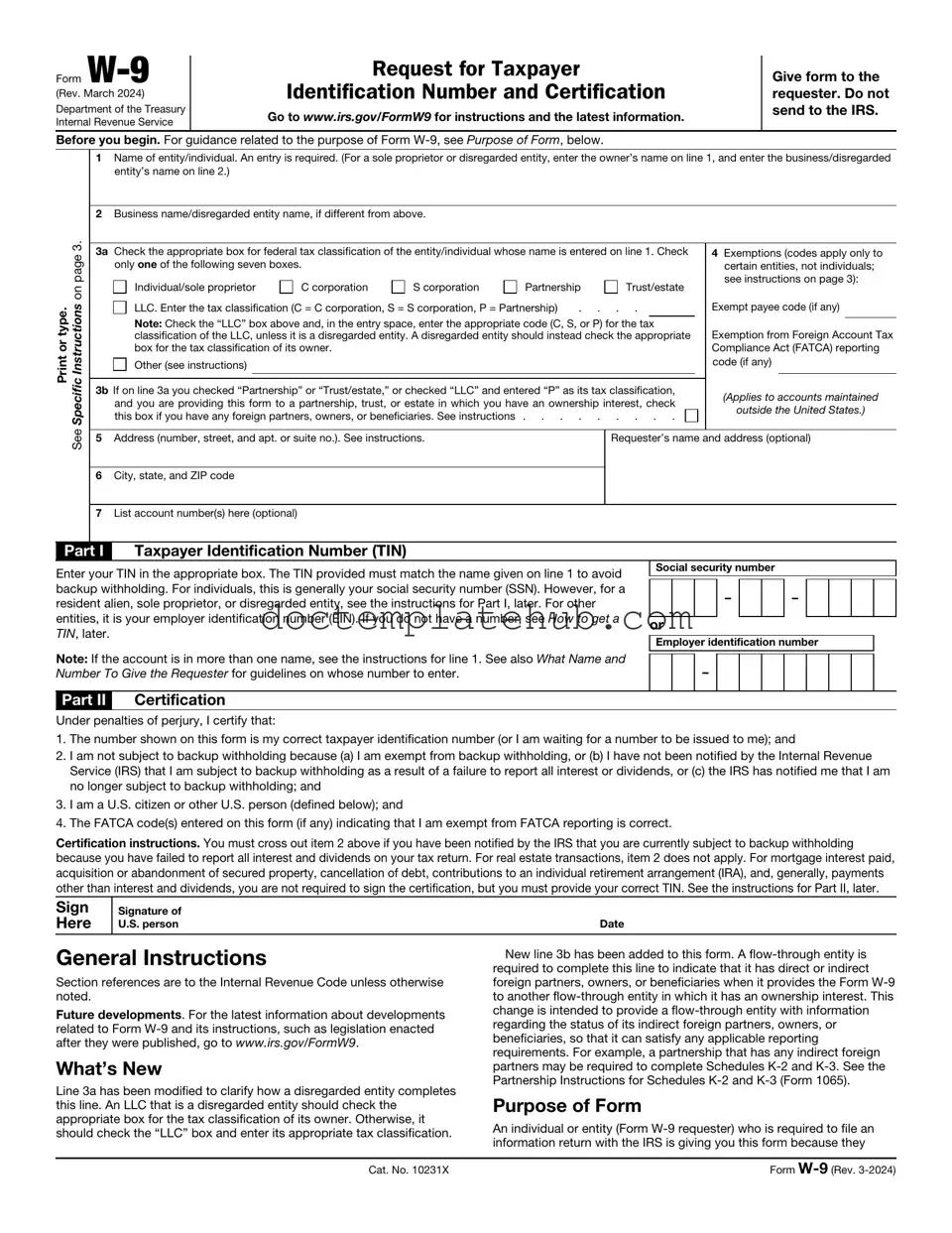The IRS W-4 form is commonly used by employees to inform their employers about their tax withholding preferences. Like the W-9, it is a form that collects personal information, such as name and Social Security number. However, while the W-9 is used primarily for independent contractors and vendors to provide their taxpayer identification information, the W-4 focuses on determining how much federal income tax should be withheld from an employee's paycheck. Both forms are essential for ensuring accurate tax reporting and compliance with IRS regulations.
The 1099 form series is another set of documents that shares similarities with the W-9. Specifically, the 1099-MISC and 1099-NEC forms are used to report payments made to non-employees, such as freelancers or independent contractors. When a business pays an individual or entity that is not an employee, it often requires a completed W-9 to obtain the necessary taxpayer information. The information provided on the W-9 is then used to accurately fill out the corresponding 1099 form at the end of the tax year, ensuring that both the payer and payee fulfill their tax obligations.
The IRS Form 1040 is the standard individual income tax return form. While it serves a different purpose than the W-9, both documents are integral to the tax process. The W-9 provides the necessary information for businesses to report payments made to individuals, which may ultimately be included in the individual’s 1040 when they file their annual taxes. The data collected through the W-9 can impact the amounts reported on the 1040, making it a critical component of accurate tax reporting.
The IRS Form SS-4 is used to apply for an Employer Identification Number (EIN). While the W-9 is focused on individual taxpayer information, the SS-4 is geared towards businesses and entities seeking to establish their tax identification. Both forms require similar identifying information, such as the name and address of the taxpayer. The W-9 is often utilized by businesses that have already obtained their EIN to provide information to those who will report payments to them.
The IRS Form 4506-T allows taxpayers to request a transcript of their tax return. This document is similar to the W-9 in that it requires the taxpayer's identification information, including Social Security number. While the W-9 is used to provide information for payment reporting, the 4506-T is used to obtain a record of past tax filings. Both forms facilitate communication with the IRS, ensuring that individuals and businesses can access necessary information for tax compliance.
The IRS Form 8821 is a tax information authorization form. It allows a designated individual to receive or inspect your tax information. Similar to the W-9, it requires the taxpayer's personal information, such as their name and Social Security number. Both forms are essential for establishing proper channels of communication with the IRS, allowing individuals to authorize others to handle their tax matters while ensuring that their personal data is protected.
The IRS Form 1065 is the return of partnership income. While it serves a different function than the W-9, both documents are vital for tax reporting purposes. Partnerships often require a W-9 from their partners to report income accurately on the 1065. The information collected through the W-9 helps ensure that each partner's share of income is reported correctly, reflecting their contributions and earnings within the partnership.
The IRS Form 1098 is used to report mortgage interest paid by an individual. Similar to the W-9, it requires personal information to ensure that the correct taxpayer is associated with the reported payments. Both forms play a role in the overall tax reporting landscape, with the W-9 providing necessary identification for those receiving payments and the 1098 detailing specific deductions that can affect an individual's tax return.
The IRS Form 941 is used by employers to report payroll taxes. While it primarily focuses on employees, it shares a connection with the W-9 in that both forms require accurate taxpayer identification. Employers must ensure that they have the correct information on file for their employees, much like they do for independent contractors through the W-9. Both forms are essential for maintaining compliance with federal tax obligations.
Finally, the IRS Form 1095-A is used to report health insurance coverage obtained through the Health Insurance Marketplace. Similar to the W-9, it collects personal information to ensure accurate reporting. While the W-9 is used for payment reporting, the 1095-A provides crucial information for individuals to claim health care tax credits. Both forms are integral to the broader tax system, ensuring that taxpayers can accurately report their financial situations and obligations.
